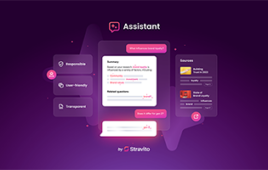A computer is being taught to interpret human emotions based on lip pattern, according to research published in the International Journal of Artificial Intelligence and Soft Computing. The system could improve the way we interact with computers and perhaps allow disabled people to use computer-based communications devices, such as voice synthesizers, more effectively and more efficiently.
Karthigayan Muthukaruppanof Manipal International University in Selangor, Malaysia, and co-workers have developed a system using a genetic algorithm that gets better and better with each iteration to match irregular ellipse fitting equations to the shape of the human mouth displaying different emotions. They have used photos of individuals from South-East Asia and Japan to train a computer to recognize the six commonly accepted human emotions—happiness, sadness, fear, angry, disgust, surprise—and a neutral expression. The upper and lower lip is each analyzed as two separate ellipses by the algorithm.
“In recent years, there has been a growing interest in improving all aspects of interaction between humans and computers especially in the area of human emotion recognition by observing facial expression,” the team explains. Earlier researchers have developed an understanding that allows emotion to be recreated by manipulating a representation of the human face on a computer screen. Such research is currently informing the development of more realistic animated actors and even the behavior of robots. However, the inverse process in which a computer recognizes the emotion behind a real human face is still a difficult problem to tackle.
It is well known that many deeper emotions are betrayed by more than movements of the mouth. A genuine smile for instance involves flexing of muscles around the eyes and eyebrow movements are almost universally essential to the subconscious interpretation of a person’s feelings. However, the lips remain a crucial part of the outward expression of emotion. The team’s algorithm can successfully classify the seven emotions and a neutral expression described.
The researchers suggest that initial applications of such an emotion detector might be helping disabled patients lacking speech to interact more effectively with computer-based communication devices, for instance.
Lip pattern in the interpretation of human emotions
Source: Inderscience




